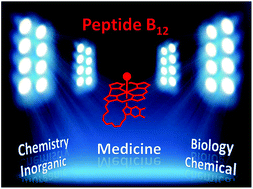Peptide B12: emerging trends at the interface of inorganic chemistry, chemical biology and medicine
Abstract
The sophisticated and efficient delivery of

* Corresponding authors
a
Institute of Inorganic Chemistry, University of Zürich, Winterthurerstrasse 190, 8057 Zürich, Switzerland
E-mail:
zelder@aci.uzh.ch
Web: http://www.zelder.ch.vu
Fax: +41 44 635 6803
The sophisticated and efficient delivery of

 Please wait while we load your content...
Something went wrong. Try again?
Please wait while we load your content...
Something went wrong. Try again?
F. Zelder, K. Zhou and M. Sonnay, Dalton Trans., 2013, 42, 854 DOI: 10.1039/C2DT32005C
To request permission to reproduce material from this article, please go to the Copyright Clearance Center request page.
If you are an author contributing to an RSC publication, you do not need to request permission provided correct acknowledgement is given.
If you are the author of this article, you do not need to request permission to reproduce figures and diagrams provided correct acknowledgement is given. If you want to reproduce the whole article in a third-party publication (excluding your thesis/dissertation for which permission is not required) please go to the Copyright Clearance Center request page.
Read more about how to correctly acknowledge RSC content.
 Fetching data from CrossRef.
Fetching data from CrossRef.
This may take some time to load.
Loading related content
